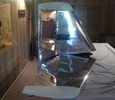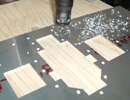


random user submitted photo
capacitor which one
7 posts
• Page 1 of 1
capacitor which one
Adding a capacitor and don't know which one to order .I have a 3300 jab
- dynomike
- Posts: 11
- Joined: Sat Feb 27, 2016 10:32 am
Re: capacitor which one
Dynomike,
What are you capacitating? I am not adding any caps to my Waiex so I'm not sure where this is needed. The voltage rating of the capacitor should be in excess of what it sees, otherwise I'd say it is not super important.
What are you capacitating? I am not adding any caps to my Waiex so I'm not sure where this is needed. The voltage rating of the capacitor should be in excess of what it sees, otherwise I'd say it is not super important.
Bryan Cotton
Poplar Grove, IL C77
Waiex 191 N191YX
Taildragger, Aerovee, acro ailerons
dual sticks with sport trainer controls
Prebuilt spars and machined angle kit
Year 2 flying and approaching 200 hours December 23
Poplar Grove, IL C77
Waiex 191 N191YX
Taildragger, Aerovee, acro ailerons
dual sticks with sport trainer controls
Prebuilt spars and machined angle kit
Year 2 flying and approaching 200 hours December 23
-

Bryan Cotton - Posts: 5489
- Joined: Mon Jul 01, 2013 9:54 pm
- Location: C77
Re: capacitor which one
Good rule of thumb: double or more of the voltage you are smoothing.
- andrewp
- Posts: 213
- Joined: Mon Oct 14, 2013 11:10 pm
Re: capacitor which one
These capacitors from B&C are probably the most commonly used ones. They are 22,000 uF, 40 Volt (but anything over 25 Volt is OK).
http://www.bandc.aero/electrolyticfilte ... tor-1.aspx
Jeff
http://www.bandc.aero/electrolyticfilte ... tor-1.aspx
Jeff
- sonex1374
- Posts: 605
- Joined: Thu Mar 27, 2014 1:02 am
Re: capacitor which one
Great .thanks so much for the answer .
- dynomike
- Posts: 11
- Joined: Sat Feb 27, 2016 10:32 am
Re: capacitor which one
sonex1374 wrote:These capacitors from B&C are probably the most commonly used ones. They are 22,000 uF, 40 Volt (but anything over 25 Volt is OK).
http://www.bandc.aero/electrolyticfilte ... tor-1.aspx
Jeff
Just returned to site and wished to add a few notes about these large caps some are using.
1) check the temperture ratings. It may be hotter than one would think under the tank and pannel after shutdown, or on hot days.
2) At the very least double, or tripple the voltage rating. Caps will absorb spikes on the dc line, and if the spikes are really over the voltage limit, the cap may fail unexpectedly at a later time, either shorting and venting its guts into the cockpit, or opening fuses somewhere.
3) There are also altitude specs on them. The spec may be 10,000 feet, but there are `14K+ hills in the US!
4) On condition inspections, if you are using a cap to reduce/elliminate dc buss noise, be sure to check the little button( may be colored red, white, or black) on top of the cap near the terminals. It is the vent plug, it can weep or be distended when the cap has had some sort of trauma causing the internal pressure to increase. Handle with care if yours shows these signs as it may be just like a rotten egg..touch it haphazardly and you may be covered with some nasty stuff. Dont ask how I know about eggs!
5) These types of caps do age and their effectiveness can deminish with time, especially when in hot conditions.
Joe Nelsen
scratch built :D
Sirpeedee, N502PD, s/n 1510, Aero Vee 2.1 s/n 0870,
ADS-B in (Stratux)/out(SkyBeacon)
Flying @81.7
KGYI/N. Tx Reg/Perrin Field
EAA Technical Counselor, Chapter 323, Sherman, TX
scratch built :D
Sirpeedee, N502PD, s/n 1510, Aero Vee 2.1 s/n 0870,
ADS-B in (Stratux)/out(SkyBeacon)
Flying @81.7
KGYI/N. Tx Reg/Perrin Field
EAA Technical Counselor, Chapter 323, Sherman, TX
-

n502pd - Posts: 380
- Joined: Sat Feb 23, 2013 12:13 am
- Location: Gunter, Texas
7 posts
• Page 1 of 1
Who is online
Users browsing this forum: No registered users and 16 guests







